Articles
‹ Return to CERV2 Overview
ERV vs HRV vs CERV – Which is the Best for your Climate?
One of the most common questions we get is: What's better for my climate - an ERV or HRV? Find out why the CERV2 beats the competition regardless of your location - from Florida to Oregon, Arizona to Canada.

Unlocking Better Sleep: The Importance of Bedroom Air Quality
Are you tired of tossing and turning at night, only to wake up feeling sluggish and unfocused the next day? Your bedroom environment might be the culprit. Research reveals the profound impact of bedroom air quality on sleep and daily performance.

Unveiling the Link Between Poor Indoor Air Quality and Higher Illness Rates
Discover how a groundbreaking study by Milton, Glencross, and Walters reveals the profound impact of indoor air quality (IAQ) on employee sick leave rates, highlighting the critical role of ventilation in mitigating respiratory illnesses and absenteeism in the workplace.

How Does Indoor Air Quality Affect Attention and Cognition?
Recent research has brought to light the profound impact of indoor air pollutants on cognitive function, underscoring the urgent need for proactive measures to uphold superior indoor air quality standards.
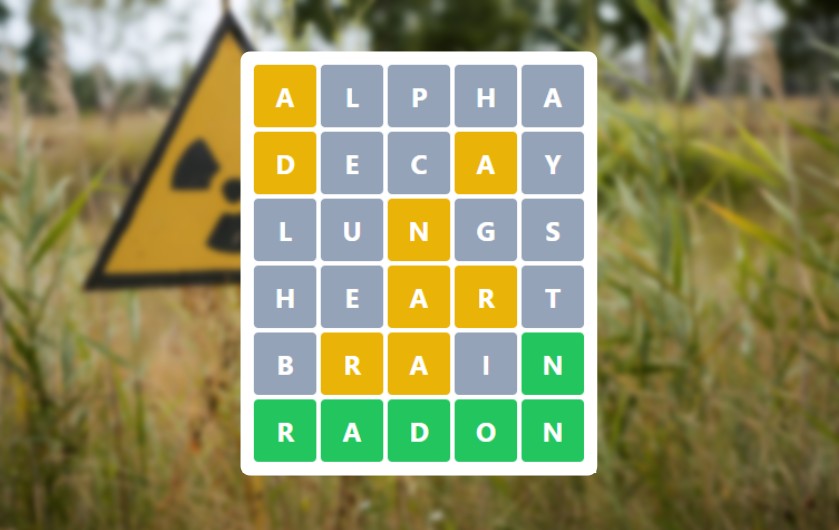
Smart Ventilation and Filtration Impacts on Radon
Radon is something we can manage without guessing. The same tools we use for reducing airborne disease transmission, chemical toxicity, and particulate concentration in indoor environments allow us to manage radon: fresh air, air recirculation filtration, and source reduction.

Getting Fit or Getting Sick:
Air Quality and Exercise
Air Quality and Exercise
Exercise is important! Elevated metabolism gets blood flowing to the extremities of our body and our brain, cleansing and revitalizing us. And, it is important to exercise in a healthy environment. Similar to bicycling in a polluted city, the health benefits of exercising in a room with poor air quality may be worse than not exercising.

Fresh Air Ventilation Requirements for Pets
Our pets need fresh air every bit as much as we do, and perhaps more - they are afflicted by many of the same environmental pressures that impact our health, and being lower to the ground exposes pets to higher concentrations of dust and pollutants.

Where the Wildfire Smoke Goes (Understanding Particulate Management)
Build Equinox regularly receives calls and emails from concerned homeowners, builders and designers around North America, as smoke blankets their communities, asking how to manage indoor air quality during these more frequently occurring exceptional events. Air quality management requires more than shoot-from-the-hip guessing.

What Can the CERV Smell?
Building a VOC Library
Building a VOC Library
The CERV tackles indoor air pollution by detecting pollutants beyond human senses, ensuring continuous protection. Explore their comprehensive library detailing pollutant sensitivity levels, aiding informed decisions for optimal indoor air quality management.
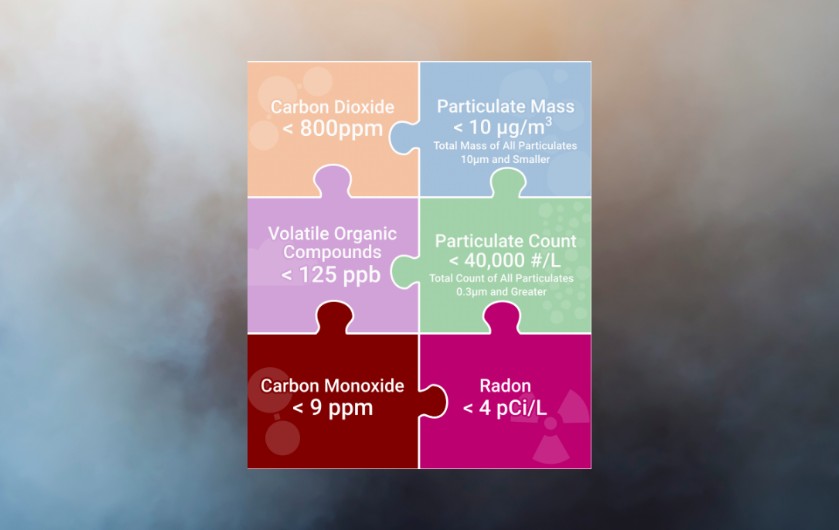
Healthy Indoor Air Quality Standards:
Carbon Monoxide and Radon
Carbon Monoxide and Radon
Indoor air quality standards for carbon monoxide (CO) and radon differ from other pollutants. CO comes from fuel burning appliances, while radon seeps in naturally from the ground. Unlike pollutants created by occupant activity, these pose health risks regardless of occupancy. Safe levels are set by the EPA: below 9ppm for CO and below 4pCi/liter for radon.
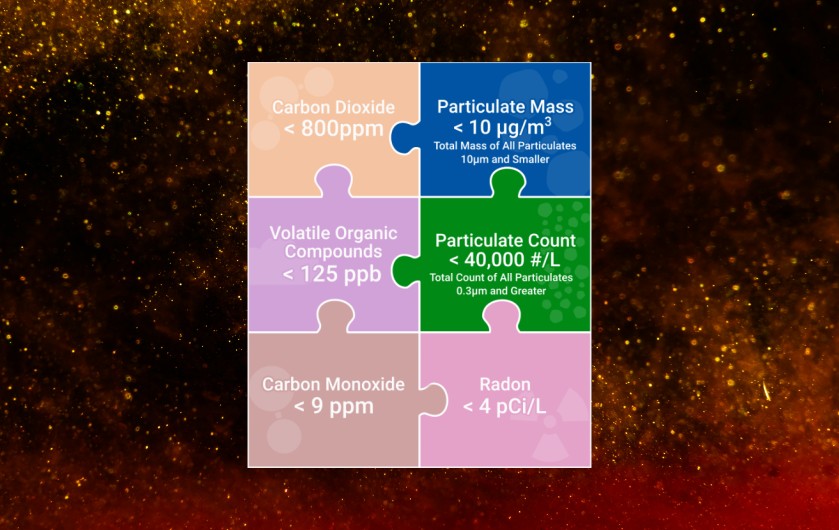
Healthy Indoor Air Quality Standards:
Particulates (PC0.3 and PM10)
Particulates (PC0.3 and PM10)
Active particulate management is essential for maintaining healthy indoor environments. Sources of particulates should be reduced as much as possible. Sealing homes from outdoor particulates coupled with fresh air filtration and recirculation-filtration of indoor air are essential for maintaining low indoor particulate concentrations.
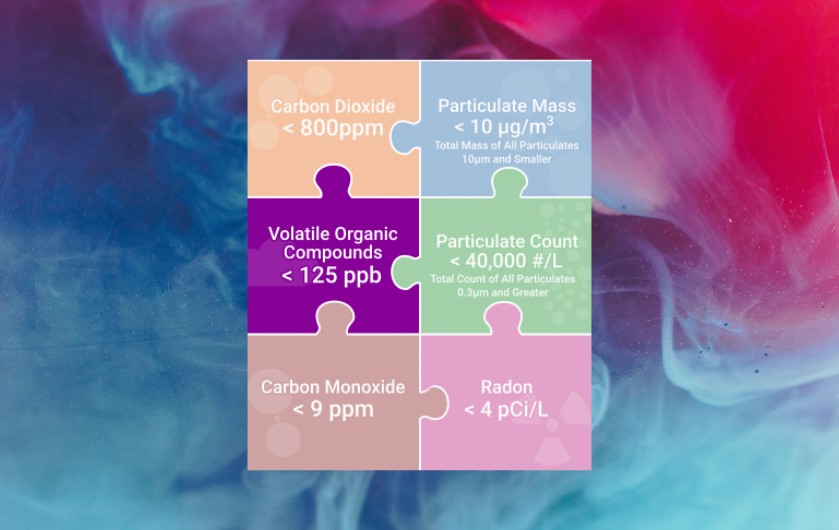
Healthy Indoor Air Quality Standards:
Volatile Organic Compounds (VOCs)
Volatile Organic Compounds (VOCs)
Volatile Organic Compounds, or VOCs, are gaseous, reactive chemicals in the air we breathe. Excessive VOC levels reduce productivity, degrade sleep, and cause acute and long term health problems. Active VOC management in our indoor environments is essential for keeping humans healthy and productive.
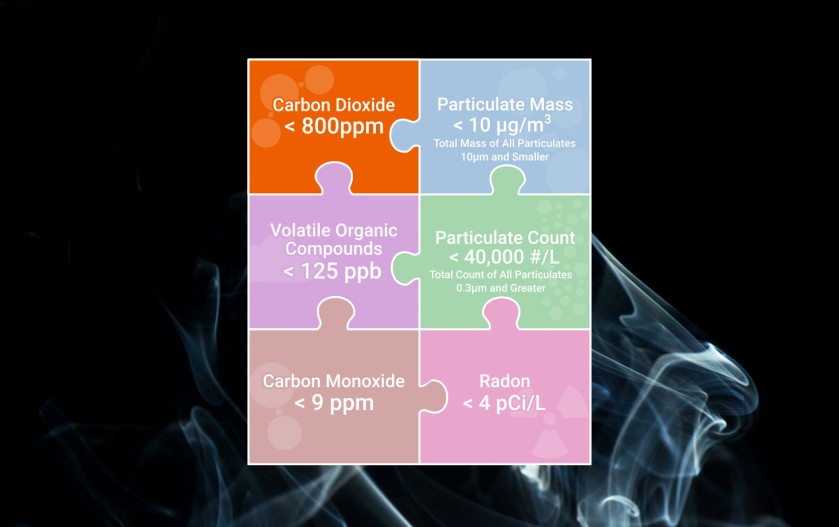
Healthy Indoor Air Quality Standards:
Carbon Dioxide (CO2)
Carbon Dioxide (CO2)
The data from multiple field studies are clear. Increasing fresh air and reducing carbon dioxide concentration results in valuable savings that far outpace potential energy cost increases. Build Equinox healthy IAQS recommendation of maintaining CO2 concentration less than 800ppm will improve human performance, improve sleep (and next day’s productivity), and reduce sick days.























